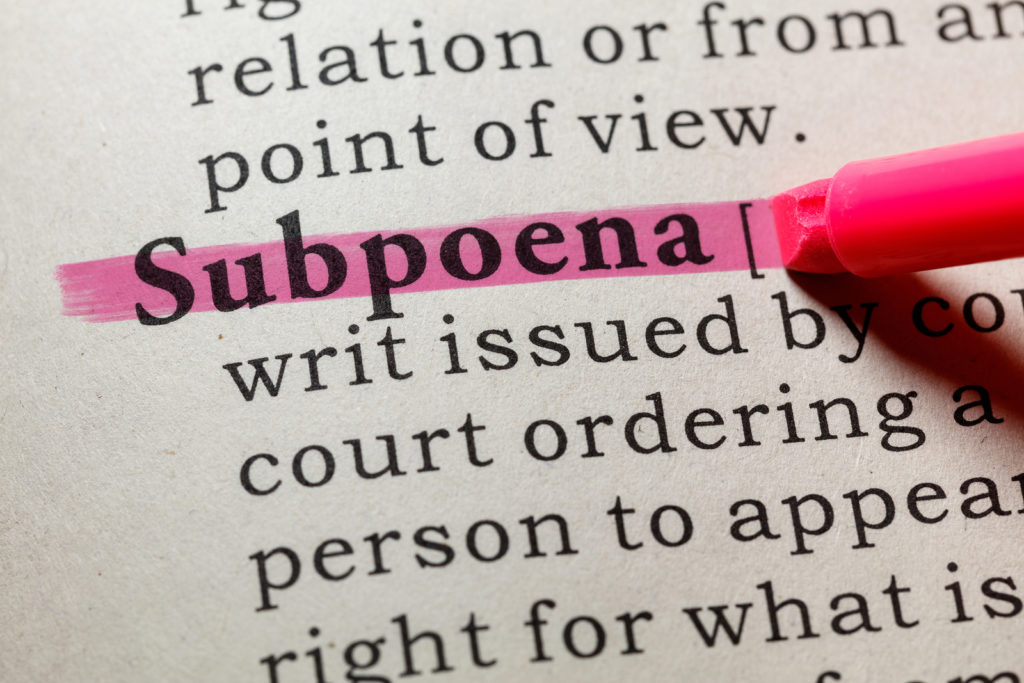Derek Legal Blog
Number of blogs returned: 6 to 10 records of 72
Expert Reports

FEDERAL CIRCUIT COURT
OF AUSTRALIA
AT PARRAMATTA
PAC 1082 of 2019
MS ANAND
Applicant
And
MR BANSAL
First Respondent
And
MR CHAUDRY
Second Respondent
And
MS CHAUDRY
Third Respondent
REASONS FOR JUDGMENT
1. On 15 May 2019, the Court made an order for an expert’s report in respect of valuing a number of real estate holdings in Country B. That report was produced on 5 December 2019 (“Expert’s Report”). Pursuant to the May 2019 orders, the valuer was appointed “as the single expert witness for the purposes of the valuations”. Although not having the particular label it was an order made pursuant to Rule 15.09 Federal Circuit Court Rules 2001 (Cth) (“FCC Rules”).
2. The wife disagrees with the opinions expressed in the Expert’s Report. She had, prior to the single expert being appointed, obtained her own valuation of the properties from a Mr C. The opinion as to the value of the properties is significantly different to the one expressed by the single expert. Mr C’s first report is dated 31 December 2018.
3. Subsequent to the Expert’s Report being released, the wife has obtained a further report from the same valuer. Mr C’s second report is dated 4 May 2020.
4. Notwithstanding some apparent changes to the zoning of the subject properties on an unknown date but suggested to be after Mr C’s first report, Mr C’s two opinions are that the properties were worth the same in May 2020 as they were in December 2018.
5. The wife now seeks orders for the single expert and Mr C to confer and produce a report pursuant to Rule 15.08 FCC Rules or in the alternative, that she is granted leave to adduce evidence of Mr C in respect of the valuations of the subject properties. The husband opposes the orders sought by the wife.
6. The Family Law Rules 2004 (Cth) (“FL Rules”) are much more detailed (and restrictive) than the FCC Rules in respect of expert evidence. Indeed there is no requirement in this Court that there be a single expert as there is pursuant to the FL Rules. While there is provision in the FL Rules for questions to be put to the single expert witnesses, and tight frames for that to occur, there are no such rules in this Court. Part 15 of the FL Rules is not included in Schedule 3 of the FCC Rules and as such those rules have no application to proceedings before this Court. While this Court can have regard to FL Rules in circumstances where the FCC Rules are inadequate, the Court does not consider this to be so in these particular circumstances. Although the particular FL Rules have no express application to this Court, they may inform the Court in the exercise of its discretion pursuant to Rule 15.12.[1]
7. It is clear that there is no property in a witness. This means, amongst other things, that a party to litigation may still approach an expert witness, including an expert witness who has written a report for another party whether that report has been served or not.[2]
8. In practical terms, there is nothing preventing the wife’s solicitors from conferring or corresponding with the single expert and putting to him questions or propositions about zoning, the basis of his report, or indeed any matter relevant to the opinion expressed in the Expert’s Report, or providing him with Mr C’s report so as to enquire about the single expert’s opinions.
9. The single expert may, or may not, be aware of such matters, and if clarity is sought, parties are not obliged to wait for examination of the single expert in Court but can seek such clarity prior to any hearing.
10. The wife has to date not taken any steps to ask any questions of the single expert or put to him any particular propositions about zoning, or suggested erroneous assumptions made by the single expert as to zoning. This is particularly so where she had in her possession Mr C’s first report prior to the single expert providing his report. According to the wife in submissions made by her Counsel, the zoning issue had been identified in that first report of Mr C. The Application in a Case was filed on 7 February 2020.
11. Even if the Court misunderstood those submissions, Mr C’s second report identified the zoning issues and there has been more than ample time to ask questions of the single expert about those matters in the interim period, rather than pressing for this interlocutory application to be heard. Had questions been asked and clarification sought of the single expert, then there might have been some further relevant evidence about the issue.
12. In circumstances where the wife might have been uncertain or confused about the interaction of the FCC Rules and the FL Rules, and in particular, the applicability or otherwise of the FL Rules in respect of specific questions to be put to a single expert, the wife could have brought (if no consent was obtained from the husband) an application to seek orders that she be permitted to put appropriate questions to the single expert, rather than the present application.
13. The Court is not satisfied that leave should be granted to the wife to adduce evidence of another expert pursuant to Rule 15.12. Furthermore, there is no scope for the orders sought by the wife pursuant to Rule 15.08 in circumstances where a single expert was appointed.
I certify that the preceding thirteen (13) paragraphs are a true copy of the reasons for judgment of Judge Obradovic
Associate:
Date: 12 August 2020
[1] See for example similar approach taken in Forsburg & Stubbs [2019] FCCA 1884
[2] See Freckelton & Selby, Expert Evidence: Law, Practice and Advocacy 4th edition, Lawbook Co at 238
Posted in: Derek Legal Blog at 16 September 20
Extension of Time to Appeal

THE APPELLATE JURISDICTION OF THE FAMILY COURT OF AUSTRALIA AT
BRISBANE
Appeal Number: NOA 37 of 2020
File Number: BRC 15038 of 2018
Mr Balmer
Applicant
And
Ms Balmer
Respondent
And
Independent Children’s Lawyer
EX TEMPORE REASONS FOR JUDGMENT
1. Before me today is an Application in an Appeal filed on 27 May 2020 by Mr Balmer (“the father”) seeking an extension of time in which to file a Notice of Appeal from orders made on 22 April 2020 by a Judge of the Federal Circuit Court of Australia (“the Federal Circuit Court”). Those orders were short in compass and I set them out in full below:
1. That the father file and serve the consolidated trial affidavit of evidence in chief, the one affidavit for each witness intended to be called in his case and an Outline of Case document by no later than 4.00pm on 6 May 2020.
2. That this matter remain listed for Final Hearing for not more than three (3) days commencing at 9.30am on 11 May 2020 in the Federal Circuit Court of Australia at Brisbane.
2. Both Ms Balmer (“the mother”) and the lawyer appointed[1] to separately represent the interests of the three children of the relationship (“the ICL”) oppose the father’s application.
3. I interpolate here that both the father and the mother filed their Written Submissions late and require leave to rely on those documents. No party opposed such leave and so I will grant each of the parties that leave.
4. The terms of the orders, at least on their face, raise doubt as to the competency of an appeal from such orders, even if the father’s application were to be successful (see Commonwealth v Mullane (1961) 106 CLR 166 at 169; Tallant & Kelsey (2016) FLC 93-742; Paintal & Paintal [2020] FamCAFC 123). However, the orders are to be considered against the background of this case which can be summarised as follows:
a) Pursuant to orders made on 26 September 2019, this matter was listed for a defended hearing over three days to commence on 11 May 2020. The father was self-represented at the time;
b) As part of those orders, each party was prohibited from personally cross- examining each other pursuant to s 102NA of the Family Law Act 1975 (Cth) (“the Act”) and, as a Notation, the parties were advised that they were entitled to apply for legal representation under the Commonwealth Family Violence and Cross-Examination of Parties Scheme (“the Scheme”);
c) On 13 February 2020, the father had contact with Legal Aid Queensland and was informed that the Federal Circuit Court had not sent a “banning notice” to them which would enable the father to apply under the Scheme for representation. That “banning notice” was ultimately sent by the Federal Circuit Court and the father was approved for representation under the Scheme on 2 April 2020.
5. The matter then came before the primary judge for a directions hearing on 22 April 2020 at which point the father’s newly appointed representatives indicated that an adjournment of the trial was sought on the basis that they had only recently come into the matter and there was a lot of relevant material which they were yet to see. The primary judge indicated his reluctance to adjourn the trial given the recommendation of the Family Report writer that the children, who were at that time residing with the father, should live with the mother as soon as possible. Ultimately, the father’s representatives sought an extension of time to file his trial material, which application was granted.
6. It can be seen, then, that the orders made on 22 April 2020, though procedural on their face, reflect a dismissal of the father’s oral application for an adjournment of the trial and, to that extent, are competently able to be appealed from, should this Court grant the father’s application for an extension of time.
Applicable legal principles
7. The principles to be applied when considering an extension of time for the filing of an appeal are well-known and often-cited in this Court (see, for example, Pendleton & Pendleton [2018] FamCAFC 203). However, something needs to be said of the lack of utility of this appeal which, in my judgment, necessitates the dismissal of this application without needing to consider its merits or any explanation for the delay.
The utility of the appeal
8. As I raised with the father today, the futility of an appeal from the 22 April 2020 orders is plain given that on 11 May 2020 the Federal Circuit Court made final parenting orders by consent. I understand that the father has filed a Notice of Appeal, within time, from those substantive orders and that, as the father himself concedes, this application for an extension of time to appeal from the 22 April 2020 orders is merely an attempt to bolster his appeal from those final consent orders (see, for example, paragraph 5 of the father’s Written Submissions filed on 30 July 2020).
9. However, the father’s complaints as to the primary judge’s failure to adjourn the trial on 22 April 2020 can properly be put in the appeal from the final consent orders, given that the father contends such dismissal was a denial of procedural fairness which ultimately denied him a fair trial and therefore affected the outcome (Gerlach v Clifton Bricks Pty Ltd (2002) 209 CLR 478).
10. Moreover, the remedy the father seeks on appeal is a remitter of the proceedings for another trial before a different Judge of the Federal Circuit Court. Even if this Court was to find error on the hearing of an appeal from these orders, the only remedy available would be the remitter or re-exercise of the question of an adjournment of a trial which has already taken place.
11. Clearly, then, an appeal from these orders is completely lacking in utility and ought be dismissed.
Costs
12. The mother sought an order requiring the father to pay her costs of this application.
13. Pursuant to orders made by the Appeals Registrar on 5 June 2020, any party seeking costs was to file and serve a schedule of those costs by 4.00pm on 31 July 2020. The mother has not filed such a schedule. Notation 1 to the order made by the Appeals Registrar specifically alerted the parties to the consequence of failing to file such a schedule being a prohibition on making an application for costs without leave of the Court.
14. In my judgment it is important that such orders are followed. The requirement for the filing of a schedule of costs well in advance of the hearing is designed to assist both the party against whom costs is sought and the Court to understand and assess the reasonableness or otherwise of the quantum of costs, and for the Court to be in a position to resolve the appropriate amount to fix for costs, with the benefit of submissions, if costs are ordered. The fixing of a sum for costs avoids the time, inconvenience and further costs to the parties and to the Court of the assessment process.
15. In my judgment, the mother ought not be granted leave to bring an application for costs in light of her non-compliance with the orders of the Court made on 5 June 2020.
16. For these reasons, I dismiss the father’s Application in an Appeal filed on 27 May 2020 and make no order as to costs.
I certify that the preceding sixteen (16) paragraphs are a true copy of the ex tempore reasons for judgment edited to correct grammatical errors and some infelicity of expression of the Honourable Justice Kent delivered on 11 August 2020.
Associate:
Date: 11 August 2020
[1] Pursuant to s 68L of the Family Law Act 1975 (Cth).
Posted in: Derek Legal Blog at 08 September 20
Change of Residence Due to Family Violence

FEDERAL CIRCUIT COURT
OF AUSTRALIA
AT DARWIN
ADC 1304 of 2016
MR CAMBROS
Applicant
And
MS CALLERY
Respondent
REASONS FOR JUDGMENT
Ex Tempore
1. These reasons for judgment were delivered orally. They have been corrected from the transcript. Grammatical errors have been corrected and an attempt has been made to render the orally delivered reasons amenable to being read.
2. This is an application concerning a child, X, who is four and three quarter’s years old. Consent orders were made between the parties on 3 December 2018 that the child live with the mother and spend time with the father three nights a fortnight, essentially, plus some other time.
3. On 24 June, the father commenced proceedings seeking an order that the child live with him until further order and seeking orders that the child spend supervised time with his mother. The father’s affidavit alleged that the child had been exposed to family violence in the mother’s home and further, has alleged that the child was displaying bruises and the child had complained that he had been hurt by the mother’s partner, Mr B.
4. The father has said that he has reported those matters to the Department of Child Protection and the police, though I had noticed there is no evidence that the child was taken to a doctor to be examined. If he was displaying bruising, I would have that that would be something that was most important. If it’s now too late, that becomes a problematic issue concerning the evidence.
5. The father made various other allegations that the child was showing an untreated staph infection and so on. He also alleged that the mother uses methamphetamine though he didn’t identify methamphetamine as the illicit drug in question, he certainly, was implying that the mother was using methamphetamine, based on her appearance. He also said that she was presently homeless and transient and living in emergency accommodation provided by a family violence or women’s safety service in South Australia.
6. The father belatedly tendered in evidence a text message dated 22 June from the mother’s partner, Mr B, which will become exhibit A1. That text message reads as follows, and it referred to a period when the father had decided to retain the child in his care. The text message sent on 22 June says as follows, and I quote:
Oi, why won’t you give X back to us? Ms Callery is at mine now saying you won’t hand him back.
Ms Callery, of course, is the mother.
7. The counsel for the mother confirmed some part of the father’s allegations. He confirmed that on the weekend of 30 or 31 May 2020, there was an incident at the mother’s home between her and Mr B. Following that, Mr B was taken into custody, it would appear by the police and kept in jail for a period. The mother was unclear how long.
8. I asked that the mother be called to give evidence about some of these issues and she was, and she was asked questions. She said that she did not wish to say what had happened between her and Mr B on 31 May, if that’s the date it was. And she declined to provide any details of what had occurred between her and him.
9. She had also instructed Mr Koziol, who appeared for her today that she had had no contact with Mr B following that episode of what I would take to be family violence. A family violence order was made on a date that’s unclear but appears to be about 5 June 2020, arising out of that incident. The terms of the family violence order are unclear to me. But as I understood the submission from the mother’s counsel, the family violence order prohibited any contact between the mother and Mr B and that order has been in place since 31 May 2020.
10. I asked the mother how it was if there was a family violence order in place, Mr B would have sent a message to the father in the terms that I have quoted above? The mother gave a very long and convoluted answer. As far as I could make out, the gist of it was that the father was subject to a home detention order. Why he would be subject to a home detention order was not stated. I suspect, the reason is that the family violence episode on 31 May was not the first such episode and there was an existing family violence order in place against Mr B. And that whatever happened on 31 May was a breach of that existing order. I don’t know, that is speculation, because I’m satisfied, I was given minimal assistance by the mother to set out what had occurred.
11. She said, as I say, in her convoluted answer, that she and Mr B were required to negotiate about the use of their shared motorcar. She said that she negotiated with Mr B through Mr B’s father. She said that Mr B pursuant to a home detention order was living at his parent’s home. She did not tell me that, initially, but after some questioning.
12. She said that, as I understood her evidence, that she had been at that home at some point on 22 June. She told me in response to a direct question that she had not seen Mr B on that date, nor had she spoken to him on that date. She said that Mr B must have got his information from his father. She said that she did not, later in her evidence, which appeared to me to be possibly inconsistent with what she had earlier said, she said that she didn’t go to the house on that day where Mr B was living but went and stayed down the road somewhat. Or as she said, “I was down the road.”
13. She said that when the message was sent, she was back at her emergency accommodation which, of course, would not explain why Mr B would have said, as he did, “Ms Callery is at mine now.” Having heard Ms Callery’s evidence, I am far from satisfied that it is safe to send this child back into her care. It appears that the child may have been exposed to a very significant episode of family violence. On the basis of what I’ve heard from Ms Callery today, I am not satisfied that she is being frank with the Court.
14. In the circumstances, I am satisfied there is an unacceptable risk of harm to this child, in particular, of being exposed to further episodes of family violence if the child resides with the mother.
15. In relation to time, the father is seeking an order that the child spend time with the mother on two occasions a week, Tuesday and Thursday from 1 to 5 and that the time be supervised by the father’s partner. I am not entirely satisfied that that is appropriate as I know nothing about the partner or her relationship with the mother.
16. The mother proposes any order for supervision and seeks an order that the child spend three days a week from 9 or 10 am to 5 pm with her, unsupervised. Having regard to the unsatisfactory nature of the mother’s evidence, I do not propose to make that order.
I certify that the preceding sixteen (16) paragraphs are a true copy of the reasons for judgment of Judge Young.
Associate:
Date: 23 July 2020
Posted in: Derek Legal Blog at 01 September 20
Husband Seeks an Injunction on the Sale of Property

FEDERAL CIRCUIT COURT
OF AUSTRALIA
AT MELBOURNE
MLC 2209 of 2018
MR CANSDALL
Applicant
And
MS CANSDALL
Respondent
REASONS FOR JUDGMENT
(revised from the transcript)
1. These reasons for judgment were delivered orally. They have been corrected from the transcript. Grammatical errors have been corrected and an attempt has been made to render the orally delivered reasons amenable to being read.
2. Having heard the parties’ submissions, I am not satisfied that the Court has the jurisdiction to deal with the applications in a case filed by the applicant husband on:
a) 26 March 2020 as amended on 15 April 2020; and
b) 28 April 2020.
3. I am also satisfied that, for the reasons which have been explored in the submissions by the respondent wife, the Court does not have jurisdiction to deal with that application.
4. Interim orders were made by her Honour Judge Stewart on 14 November 2018 which provided for the sale of the property at C Street, Suburb D (“the property”), which is the subject of this application (“the November 2018 orders”). The November 2018 orders provided a mechanism for the husband to sell the property forthwith, and for the sale proceeds to be divided. These orders were not complied with by the husband, which led to the wife bringing an application on 15 May 2019. Further orders were made by his Honour Judge Riethmuller on 15 July 2019 providing for the wife to have control of the sale (“the July 2019 orders”). The July 2019 orders provided for:
a) the appointment of an agent;
b) the determination of a sale price; and
c) the sale to be effected.
5. On the basis of the material which has been filed in this matter, I am satisfied that the wife has complied with the July 2019 orders to effect that sale. The July 2019 orders were made by his Honour after a contested hearing between the parties. To date, no appeal has been filed against those orders. This Court does not have the authority to vary those orders, which only an appeal Court would have. In those circumstances, I do not have the power to deal with this application, and I therefore dismiss the application.
6. To the extent that an application for a stay has been made orally today, it has been said on behalf of the respondent wife that the Court does not have the jurisdiction to grant a stay until such time as an appeal or application for leave to appeal has been made.
7. It was argued on behalf of the husband that rule 29.04 of the Federal Circuit Court Rules 2001 (Cth) is broader in its terms than rule 22.11 of the Family Law Rules 2004 (Cth) and is not dependent upon an appeal being lodged or application for leave to appeal being filed.
8. It is not necessary for me to determine that issue because I am not satisfied that the husband has identified any factors which would warrant the granting of a stay at this point in time. If the husband files an appeal, then certainly it would be open to him in those circumstances to seek a stay of the orders to which the appeal relates.
9. I therefore am not prepared to exercise any discretion that the Court would have at this point in time to grant a stay of the July 2019 orders. That is an issue to be determined if and when a proper application is filed in this Court.
I certify that the preceding nine (9) paragraphs are a true copy of the reasons for judgment of Judge Mercuri
Associate:
Date: 15 June 2020
Posted in: Derek Legal Blog at 25 August 20
Leave to Issue a Subpoena to the Department of Child Safety

THE APPELLATE JURISDICTION OF THE FAMILY COURT OF AUSTRALIA AT
BRISBANE
Appeal Number: NOA 54 of 2019
File Number: BRC 9223 of 2017
Ms Jebbett
Applicant
And
Mr Corey
Respondent
And
Independent Children’s Lawyer
REASONS FOR JUDGMENT
1. By an Application in an Appeal filed on 8 July 2020, Ms Jebbett (“the applicant”) sought leave to issue a subpoena to the Department of Child Safety, Youth and Women (“the Department”) in Queensland for the production of documents to be used by her in an appeal against parenting orders made by a judge of the Family Court of Australia on 29 May 2019. Mr Corey (“the respondent”) and the Independent Children’s Lawyer opposed the application.
2. I dismissed the application on 14 July 2020 and these are my reasons for doing so.
3. The hearing before the primary judge, which lasted for nine days with further written submissions filed by each party, raised difficult and complicated issues.
4. In summary, the outcome was that the parties’ child was to live with the applicant and spend no time with the respondent. The applicant was granted sole parental responsibility for the child but she was required to consult with the respondent in writing as to decisions to be made in the exercise of that responsibility.
5. Relevantly, the applicant appeals against the aspect of the orders requiring her to consult with the respondent in the exercise of sole parental responsibility and the orders that effectively prevent her from home schooling the child, amongst other orders.
6. The applicant’s appeal from the orders made on 29 May 2019 is listed for hearing on 30 July 2020, along with her other appeal against the primary judge’s refusal to stay the parenting orders.
7. The subpoena which the applicant wishes to issue to the Department seeks “a copy of all notification records notified by way of, phone call, fax, email, mail to the [D]epartment … from August 2018 till now” (as per the original). The applicant explained that the purpose of the subpoena was to obtain a copy of the records of a notification made about the child to the Department in late November 2018, which was just before the commencement of the hearing before the primary judge.
8. The applicant explained that the documents are relevant to the appeal because the copy of the documents that she currently holds has the name of the notifier redacted. Thus, the point of the subpoena is to try and identify the notifier. The applicant suspects that the notifier is one of the experts that gave evidence in the proceedings before the primary judge and she submits that if that is the case, then it follows that the expert was biased against her and dishonest and that the expert’s evidence and opinions should not have been accepted.
9. All this is said to be relevant to Ground 1 of the appeal, which is: “[t]he [primary judge] relied heavily on expert evidence which was given without knowledge and experience.”
10. Ground 1 does not raise the issue of bias or dishonesty and the identity of the notifier seems to have less than tangential relevance to the ground of appeal.
11. For obvious public policy reasons, government departments that receive notifications in relation to the safety of children are quite properly reluctant to disclose the identity of the notifiers. If it were otherwise, there might be a reluctance for people to bring matters of concern about children to the attention of the relevant departments. They are, thus, entitled to object to the un-redacted production of documents that could tend to identify notifiers on the ground that such production would offend public policy.
12. Thus, as has been done with the document presently in the possession of the applicant, it is likely that the Department would object to disclosing the identity of the notifier when responding to the subpoena. It is most unlikely that this issue would be resolved before the hearing of the appeal on 30 July 2020.
13. The difficulty with the production of the document sought by the applicant is confirmed by s 186 of the Child Protection Act 1999 (Qld) which provides that the recipient of a notification of harm or risk to a child “must not disclose the identity of the notifier to another person unless the disclosure is made … by way of evidence given in a legal proceeding under subsections (3) and (4)” (s 186(2)(f)). Those subsections provide that the identity of the notifier must not be revealed without leave of the Court (s 186(3)) and the Court must not grant leave unless it is satisfied that “the evidence is of critical importance in the proceeding” (s 186(4)(a)(i)) and “there is compelling reason in the public interest for disclosure” (s 186(4)(a)(ii)).
14. As I have already said, the identity of the notifier is of tangential relevance to one of the grounds of appeal. I am not satisfied that the identity of the notifier is of critical importance in the appeal, although I accept that the applicant sees that differently. I also find that there is no compelling reason in the public interest for disclosure of the identity of the notifier.
15. The applicant submitted that it would be appropriate for the identity of the notifier to be revealed only to the members of the Bench hearing the appeal. That creates obvious difficulties of procedural fairness and is not an appropriate way to proceed.
16. The Department should not be the subject of the applicant’s proposed subpoena because the document sought is most unlikely to be made available to the parties in un-redacted form. Further, given the complexities in the matter, the issue of the subpoena is likely to give rise to applications which would require the appeal to be delayed.
17. Accordingly, the Application in an Appeal filed on 8 July 2020 was dismissed.
I certify that the preceding seventeen (17) paragraphs are a true copy of the reasons for judgment of the Honourable Justice Aldridge delivered on 16 July 2020.
Associate:
Date: 16 July 2020
Posted in: Derek Legal Blog at 18 August 20




